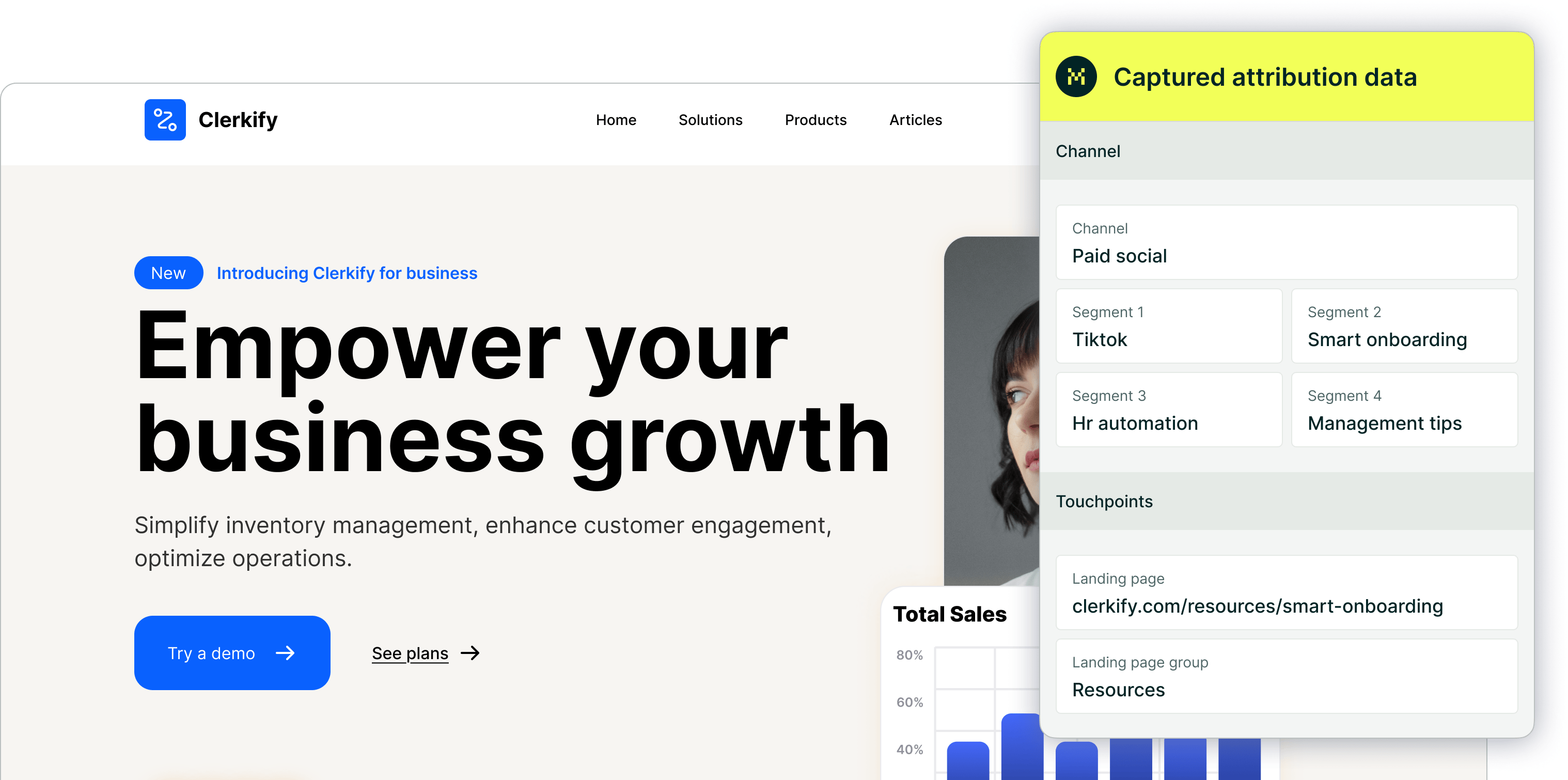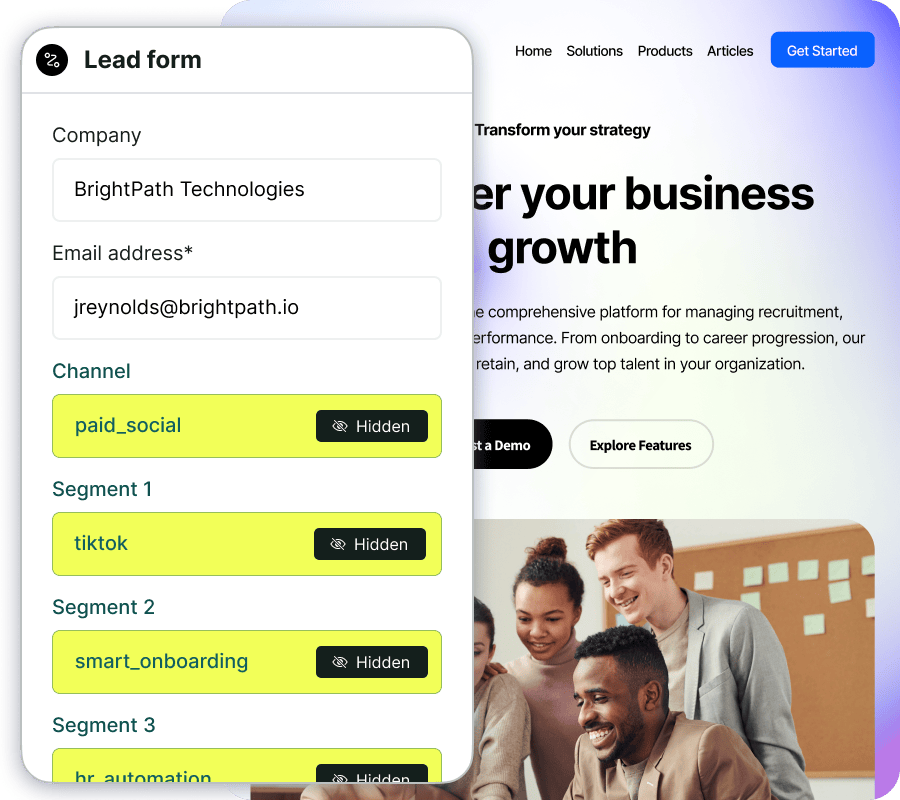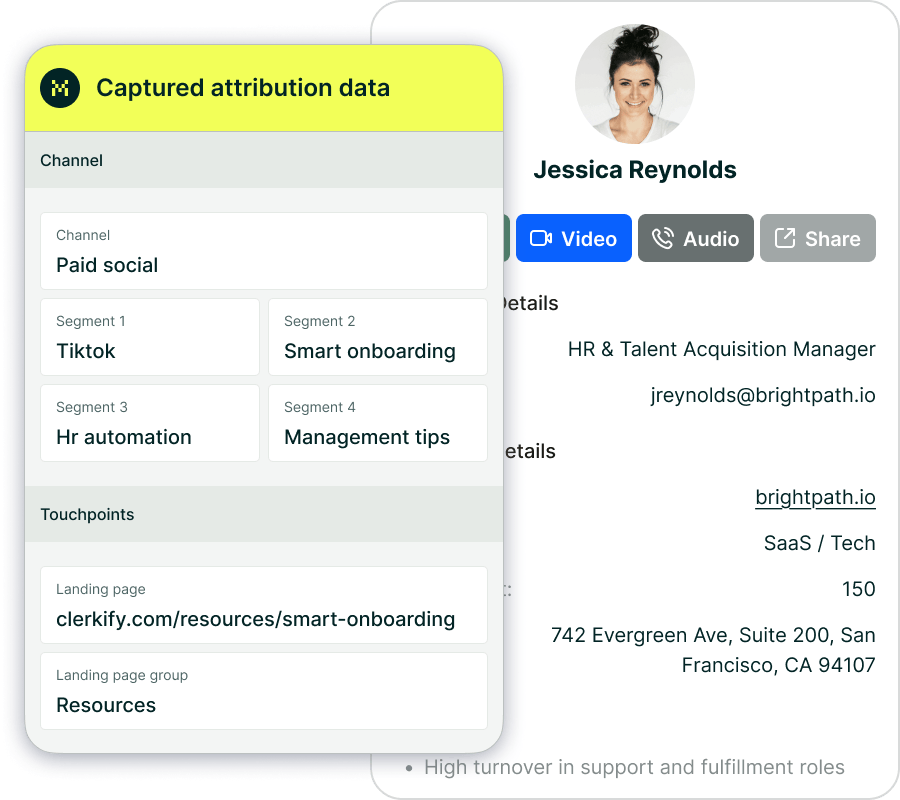Why Madlitics outperforms basic UTM tracking
Basic UTM tracking provides a snapshot of where a visitor came from — but it has major limitations, often failing to persist data across sessions, losing attribution when users navigate between pages, creating inconsistent reporting due to formatting errors, and more. Gaps that can result in misattributed leads, poor reporting, and wasted marketing spend. Making decisions based on incomplete data, could result in missing out on opportunities to scale what actually works or overinvesting in underperforming channels.
Madlitics solves these challenges by providing a seamless, structured approach to marketing attribution.
Complete Traffic Tracking
Most attribution tools only track UTM-tagged visitors — but not every visitor carries UTM parameters. That means a large percentage of your leads, such as those from Organic Search, Organic Social, Direct, and Referral traffic, may go completely unaccounted for.
Madlitics fills in these gaps capturing and categorizing all inbound traffic sources — even when UTMs are missing — ensuring that every lead is properly attributed. Instead of guessing where your conversions are coming from, you get a full picture of what’s driving real business growth.
Keeps attribution data — across pages and sessions
Other tracking methods fail when a visitor moves between pages before converting.
Imagine someone clicks on a LinkedIn ad, lands on your website, browses a few pages, and then decides to sign up — but instead of submitting their details on the landing page, they navigate to your ‘Contact’ page first. With traditional tracking, that LinkedIn ad attribution would likely be lost. The CRM would simply register them as a generic direct lead — causing incorrect reporting and missed ROI insights.
Madlitics ensures that never happens. It stores attribution data across the visitor’s entire session, so no matter how they navigate your site or how long they take to convert, their original source stays attached. This means your marketing data remains accurate, complete, and reliable—allowing you to optimize with confidence.
Cleaner, more reliable data
Raw UTM tracking often creates more problems than it solves. If you’ve ever managed UTM links, you know how easily inconsistencies creep in. Small formatting differences — like utm_source=Google vs. utm_source=google.com — can split attribution across multiple sources, leading to duplicate records and misleading analytics.
Madlitics automates data normalization, cleaning, and categorization before passing attribution details into your CRM, standardizing inconsistent UTMs, grouping similar traffic sources, and ensuring that your marketing reports reflect true performance. With clean, structured data, your marketing team can focus on insights and strategy instead of fixing attribution errors.
Tracking content influence
Attribution isn’t just about where a visitor came from—it’s about understanding what convinced them to convert. Capturing not just UTM parameters, but also landing page data means you can see which specific content played a role in driving conversions:
• Blog post that educated the prospect
• Case study that built credibility
• Pricing page that sealed the deal
By tracking content influence, Madlitics allows you to double down on the pages and topics that drive the most revenue, ensuring your marketing team makes data-driven content decisions.
Transform form submissions into actionable insights
Raw UTM tracking gives you data—but it doesn’t give you clarity. Madlitics bridges this gap by connecting marketing touchpoints to lead generation, ensuring every conversion is properly attributed, giving you true visibility into what’s working.
• Improve campaign performance by identifying high-ROI channels.
• Refine messaging based on which content drives engagement
• Eliminate wasted ad spend on underperforming sources.




